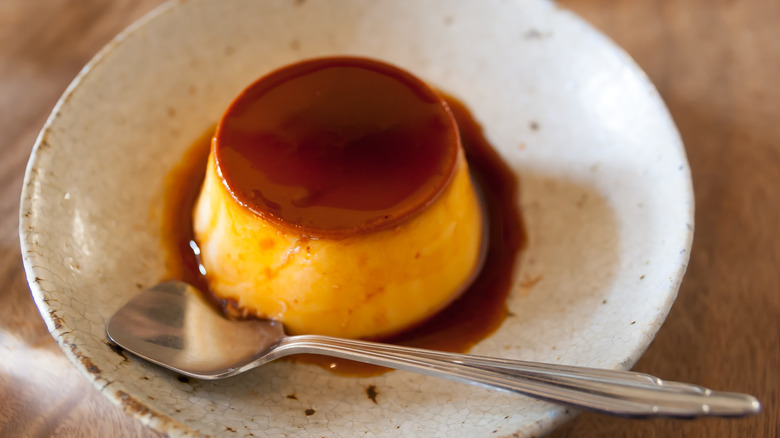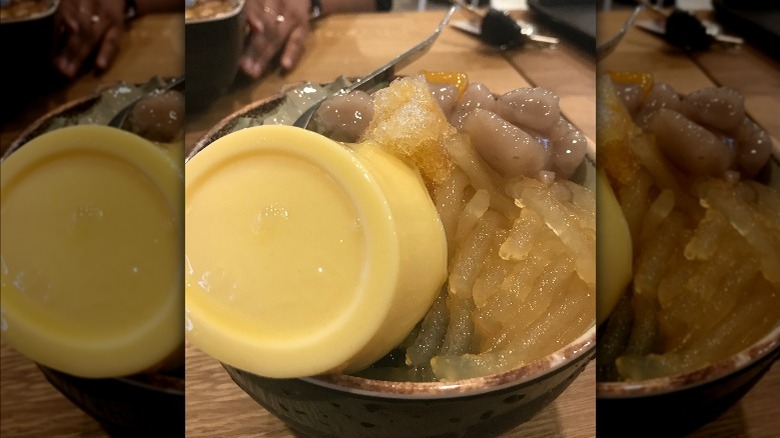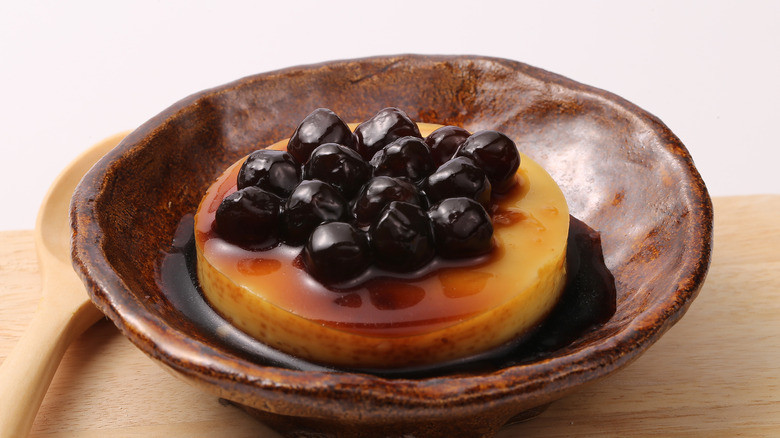The Silky, 3-Ingredient Egg Pudding That Should Be On Your Radar
In the vibrant heart of Tokyo, you found yourself savoring a simple yet delightful dessert — a silken egg pudding known as purin (or Japanese for pudding), akin to the Spanish flan and French crème caramel. Across Asia, there are numerous iterations of this silky egg pudding. Despite the differences, most versions are crafted using a trifecta of ingredients: eggs, sugar, and milk, prepared via steaming, microwaving, or a bain-marie.
The intriguing journey of pudding across continents can be traced back to the interplay of colonization, trade, and cultural exchange from Europe. By the 1600s, the Japanese had welcomed a sweet rendition of egg pudding, or purin, into their culinary repertoire. Then the concept of custard gained widespread acceptance by the 1800s. Concurrently, during the Qing Dynasty, various steamed milk and egg puddings emerged in China. Some recipes called for egg whites exclusively, while others incorporated whole eggs. Regardless of their origin, these not-too-sweet egg puddings share common attributes: an irresistibly silky smoothness and a straightforward cooking process.
Easily steam, microwave, or bake silky egg puddings at home
It's easy to make silky egg pudding at home. Let's start with a Chinese version called "冰花燉蛋": whisk together these three fundamental ingredients, eggs, milk, and granulated sugar or rock sugar. Strain the mixture through a sieve to ensure ideal smoothness, then cover and steam until set. It's also possible to microwave this dessert or bake it in a bain-marie.
To create Japanese purin, an additional caramel-making step is incorporated. The base of the egg pudding is quite similar to the Chinese egg pudding, though heavy cream is sometimes used instead of milk for a creamier result. The caramel sauce is made from cooking sugar and water and added to the bottom of the cooking vessel, like a ramekin. Once the caramel is set, the egg mixture is carefully poured on top. The dessert is then steamed or baked in a bain-marie until set.
While these silky egg puddings make a delightful standalone treat, inventive dessert shops and home chefs have been reimagining them, ingeniously pairing them with various enticing toppings, like boba.
Add toppings to silky egg pudding or use it as a topping
Having undergone evolution and transformation over centuries across Asia, silky egg pudding is now being imaginatively reinterpreted by dessert enthusiasts globally. You can now enjoy it generously topped with various boba drink accompaniments such as lychee jelly, brown sugar boba, jelly noodles, or mochi. These chewy additions provide a delightful texture contrast to the smooth egg pudding. It can also be a creamy, fun addition to your boba drinks. Moreover, egg pudding is a sought-after topping in shaved ice desserts like kakigōri and bingsoo. When drizzled with sweetened condensed milk, the combination is divine.
The variety of flavor pairings with silky egg pudding are truly endless: traditional caramel or brown sugar syrup, or even polarizing durian can be paired with it. Moreover, the puddings need not be limited to egg or vanilla flavors. Matcha, ube, pandan, black sesame, or lavender are just a few options you can experiment with. While maintaining its signature silky texture and subtle sweetness, this simple dessert proves its versatility as both a topping and a base for toppings, showcasing how masterful desserts endure the passage of time and shifts in palate preferences.


